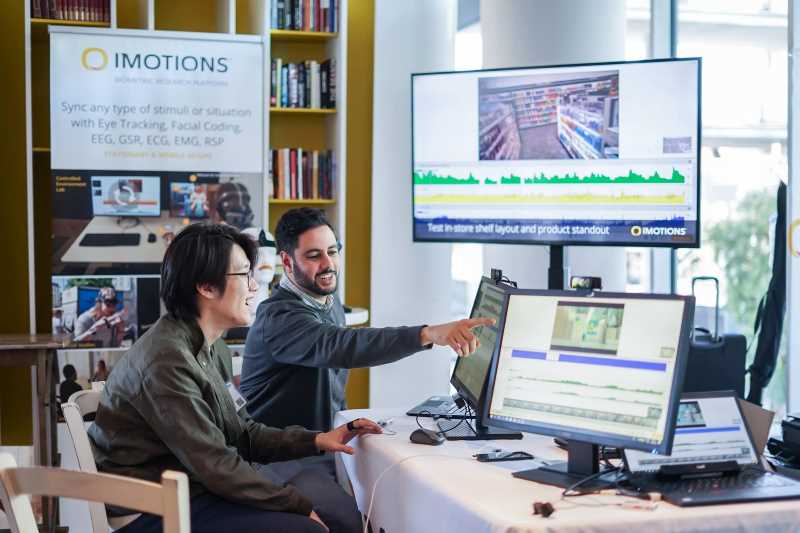The variety of surfaces in urban environments is crucial for understanding human experiences in cities. Surfaces can influence navigation and emotional responses, particularly regarding specific façade characteristics. This study examined how spatial variables of façades-roughness, materiality, solidity-affect emotional stress and the human experience of places. An experiment using iMotions software and selected images of urban façades in New Haven, Connecticut, tracked participants’ eye movements and facial reactions to these spatial features. Fifty-two participants with access to a computer contributed data to understand the relationship between stress, cognition, and façade characteristics. The analysis revealed significant correlations between stress levels and specific façade characteristics, supporting our hypothesis. Brighter, softer, and smoother façades positively correlated with gaze patterns and positive emotional expressions, reducing stress. Façades with perforation or semi-solidity façades increased fixation duration, indicating higher affordance. Consistent gaze patterns on solid façades, except semi-solid ones with minimal elements, highlighted the importance of materiality and texture in emotional responses. Emotions such as anger were linked to stimuli causing higher saccadic movements, while joy was associated with brighter stimuli and softer textures. The contrast between conscious reactions to emojis and unconscious data suggests that stress in the built environment significantly impacts subjective well-being.
Related Posts
-

Remote Biometric Research: How Cloud-Based Data Collection Is Enhancing Consumer & UX Insights
Consumer Insights
-

Jaguar’s Type 00 Ad: Smiles, Confusion, and Curiosity – What Viewers Really Felt About it
Consumer Insights
-

Choice Blindness – Explaining The Choices We Don’t Make
Consumer Insights
-

Jaguar’s Bold Rebrand Put to the Test
Consumer Insights



